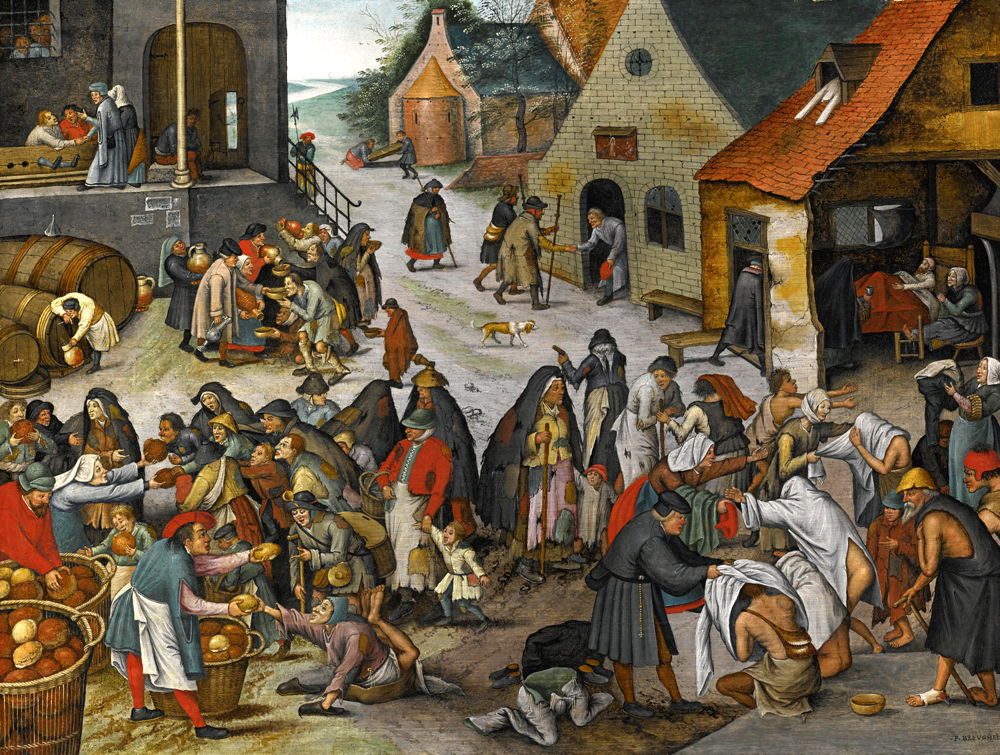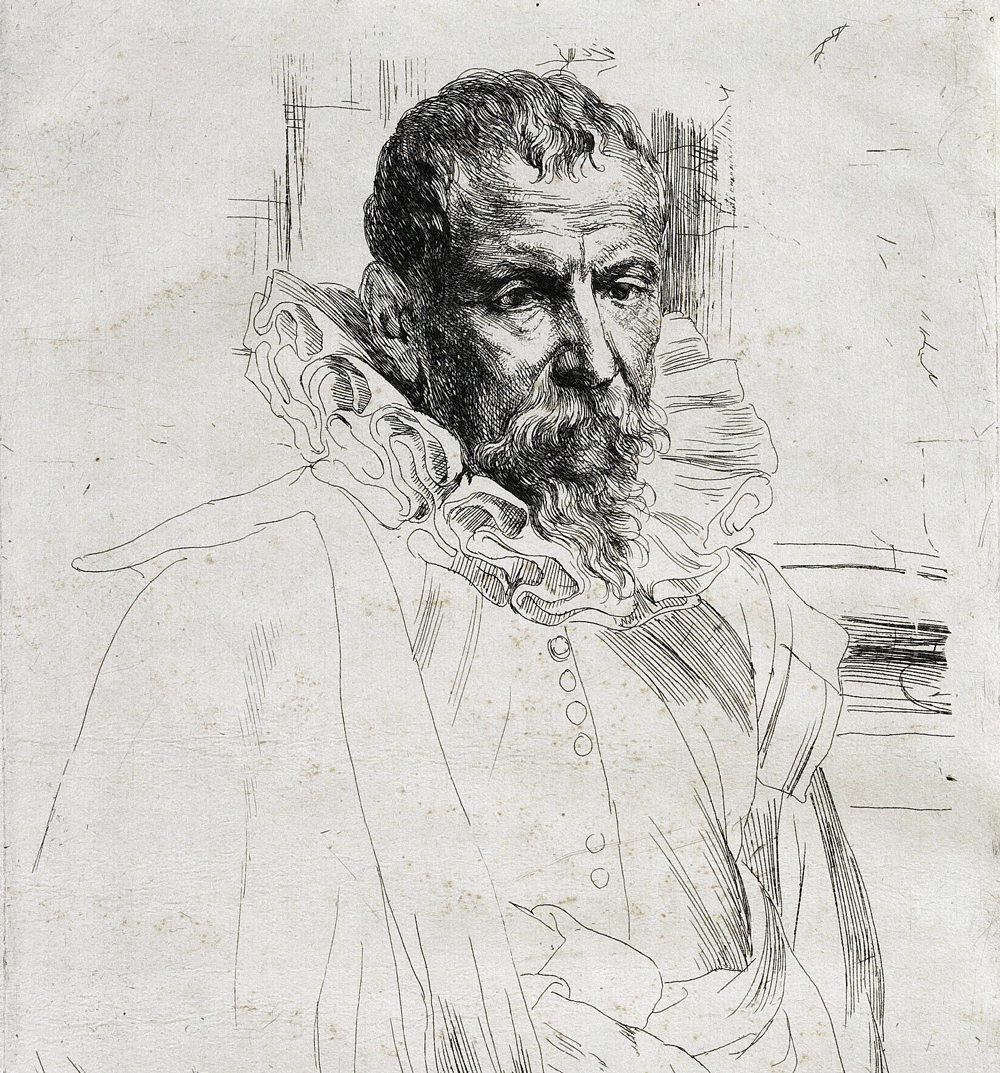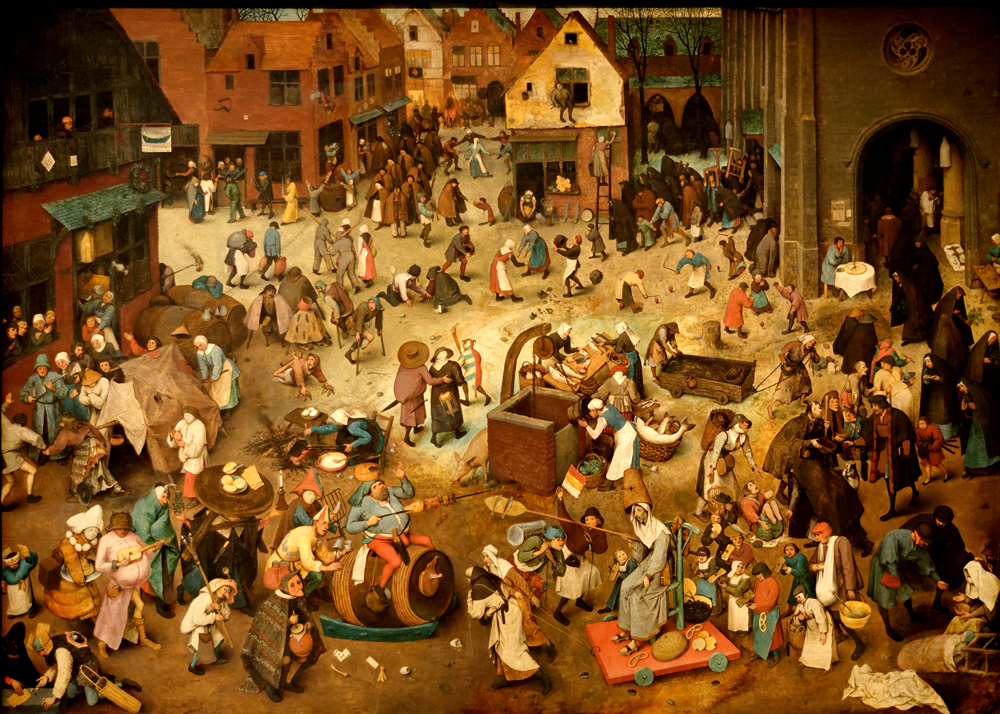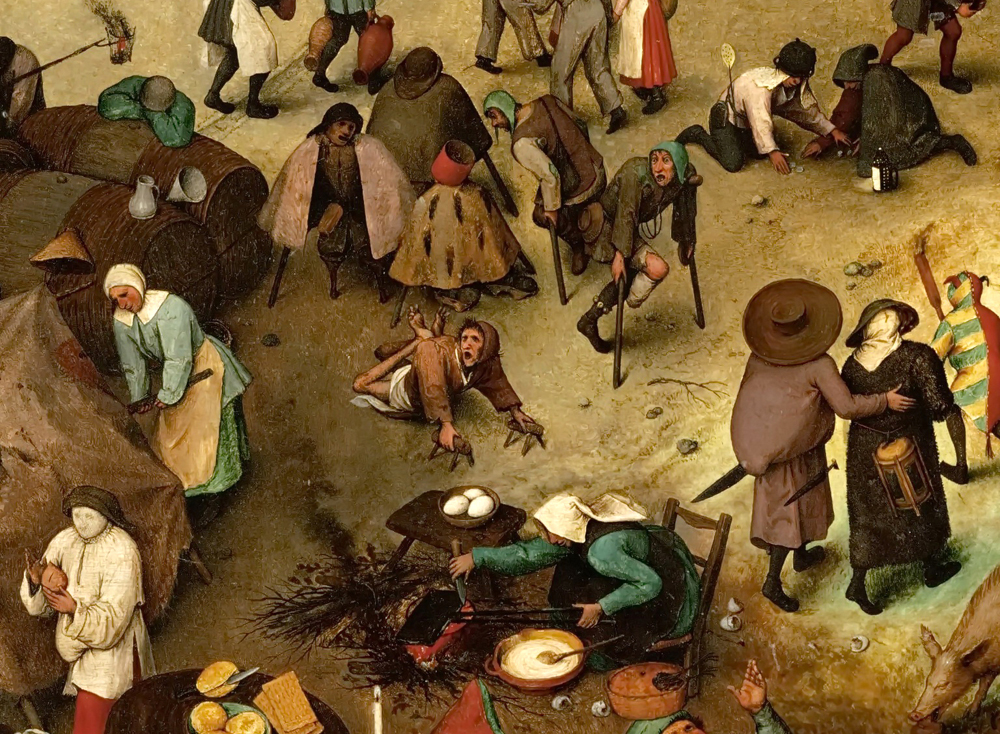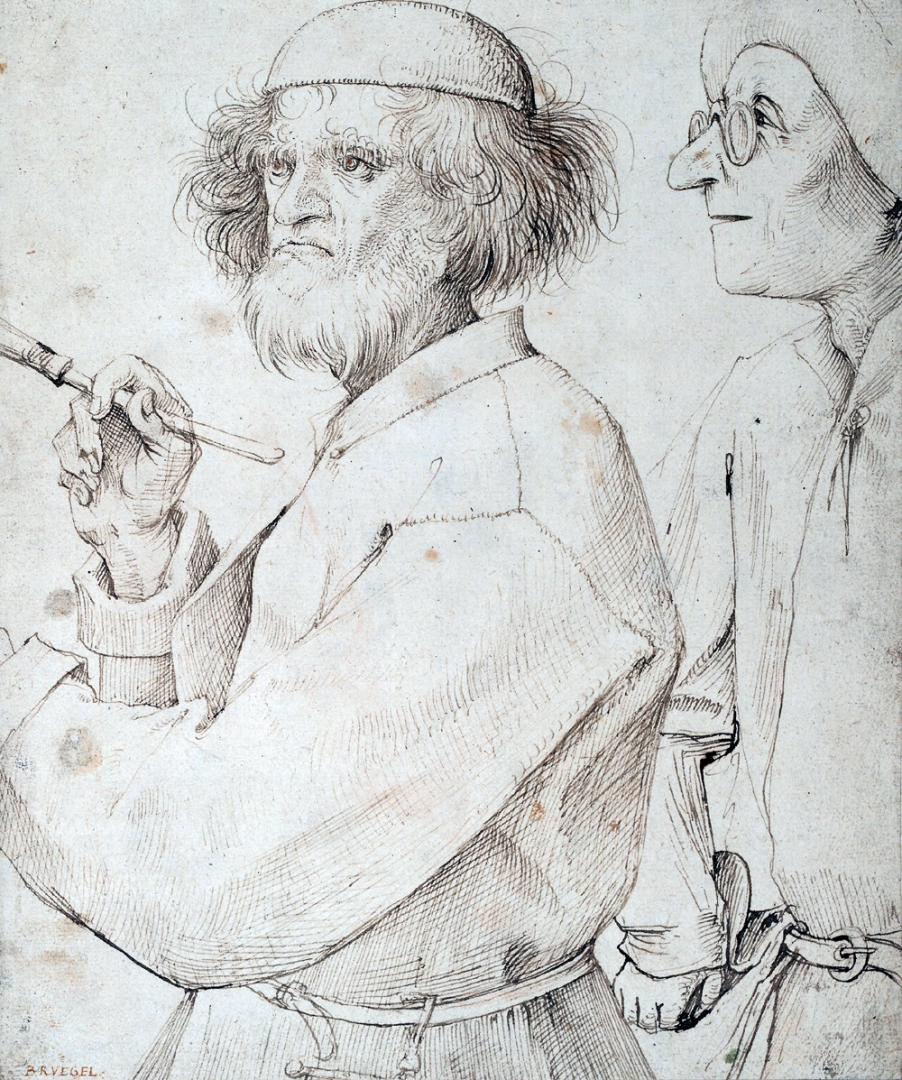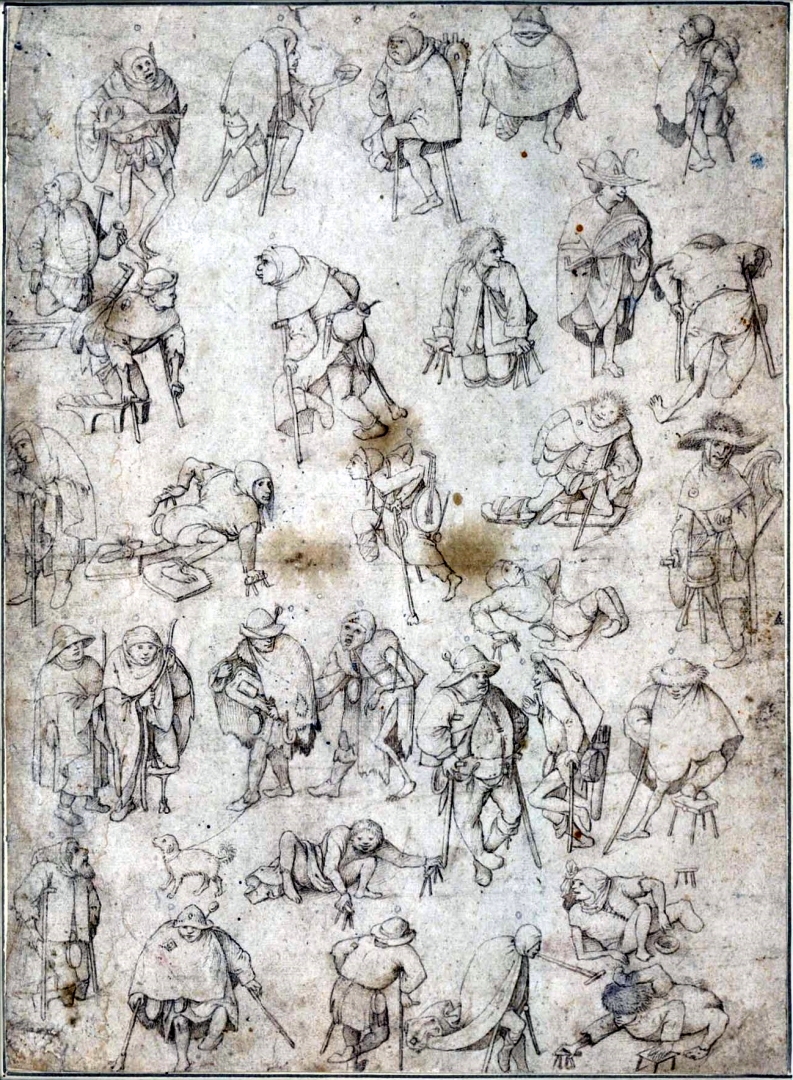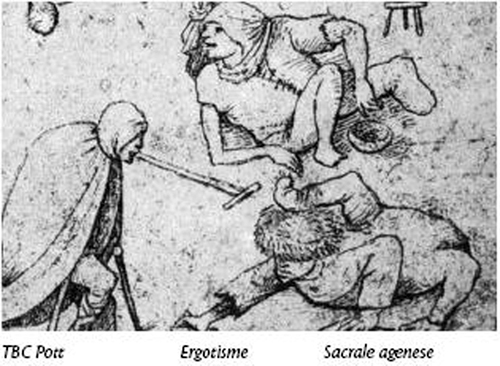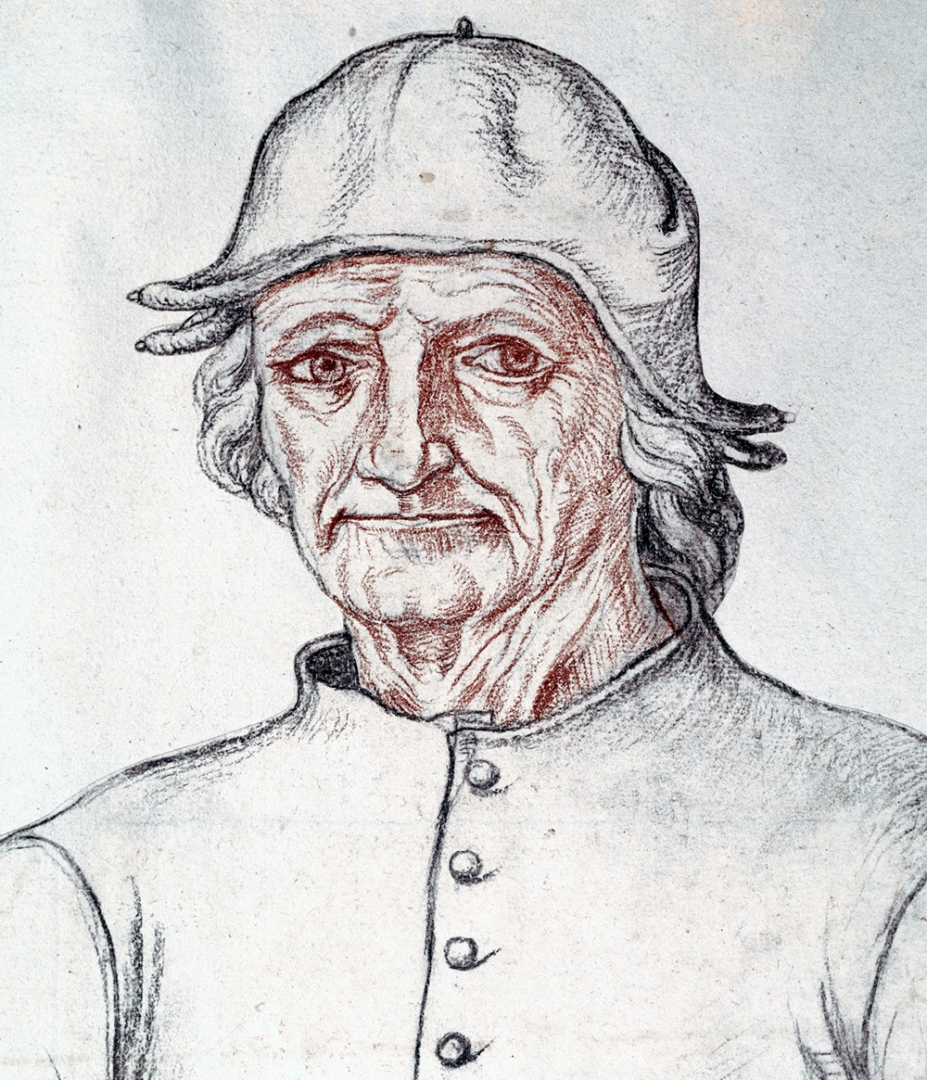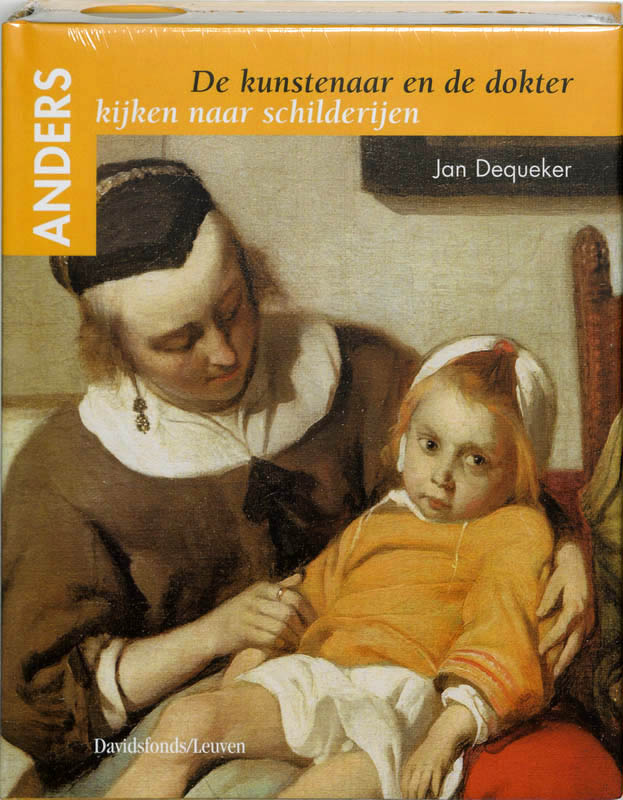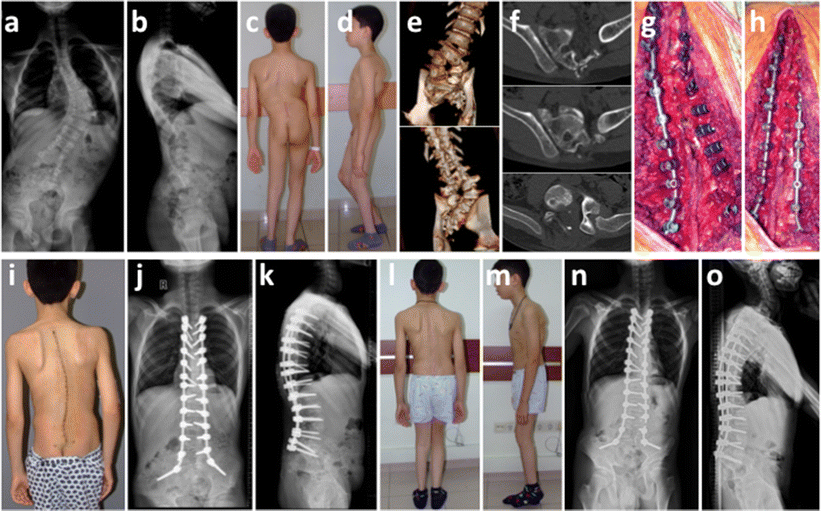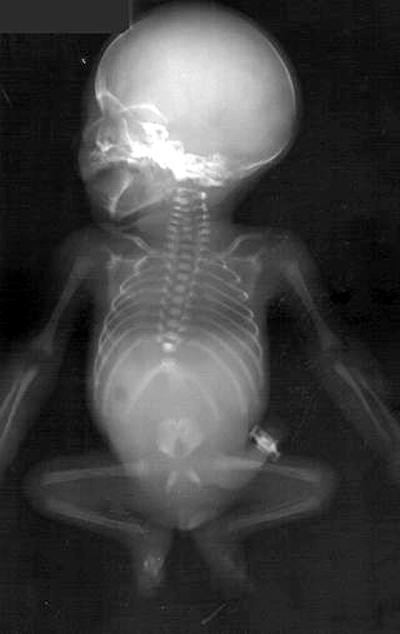Pieter Brueghel the Younger
1564, Brussels - 1667, Antwerp, Belgium
Pieter Breughel the Younger was the eldest of two sons, born shortly after the death of their father, Pieter Breughel.
(The father spelled his name as ‘Breughel’ until 1559, then as ‘Brueghel’. The sons retained the ‘h’ in the spelling of their names).
The young Breughel is also known as Hellebreughel because of his fondness for goblins, fire, and grotesque figures.
He made his career in Antwerp, where he became a master of the guild in 1585. He is best known as a copyist of his father's paintings, which were as popular as they were scarce.
In his own paintings, such as The Village Fair and The Crucifixion, he demonstrated a firm grasp of space and movement.
His son, Pieter Breughel III (1589-1640?), was also primarily a copyist.
♦ The seven works of mercy ♦
All works of mercy are depicted here in a folkloric manner.
The cripple in the foreground, sliding on his stomach with his hand in a shoe and his legs in the air, hopes to get a piece of bread.
He is a very unusual creature.
♦ Diagnosis
Key signs: Lower limbs hyperextended at the hip. Strong upper limbs. Dorsal kyphosis.
Additional signs: Poorly dressed but well-nourished man.
Clinical diagnosis: Congenital agenesis of the sacrum as part of a regression of the coccyx.
♦ Definition: agenesis of the sacrum (sacral agenesis)
Incomplete or complete development of the sacrum may be accompanied by paralysis of the lower limbs and urinary tract problems.
The sacrum is a triangular curved bone consisting of five fused vertebrae. It is located between the last lumbar vertebrae (above) and the coccyx (below) and forms the back of the pelvis.
♦ Discussion
The term sacral agenesis is used to describe a wide range of disorders affecting the lower parts of the spine and pelvis. This indicates that part of the lumbar vertebrae, sacrum, or pelvis is incomplete or malformed at birth. Fortunately, this is a rare condition that affects only 1 in 25,000 children.
If the nerves that emerge from the sacrum are also abnormal, this can have a number of very different effects. It can affect the intestines or the sphincter muscles, leading to constipation or fecal incontinence.
It can also affect the bladder and the sphincter muscles of the urinary tract, resulting in urinary incontinence and urinary tract infections.
Sometimes, the bladder of patients with sacral agnosia contains so much urine under such abnormally high pressure that it can lead to kidney damage. Ultimately, abnormal nerves in the sacrum can result in varying degrees of paralysis of the lower limbs. This can range from minor problems such as an unsteady, wobbly gait to permanent use of a wheelchair.
There is a growing belief that there is a link between the development of sacral agenesis and diabetes in the mother. However, the number of cases remains very small and no genetic link has been found.
Prenatal diagnosis is possible but uncommon. Most cases are only discovered after birth. Sometimes the diagnosis is delayed until the child is older and develops problems such as incontinence, urinary tract infection, or paralysis.
Although sacral agenesis is a rare congenital abnormality, we still find depictions of this deformity in older paintings,
such as in The Battle Between Carnival and Lent (1559) by Pieter Brueghel the Elder, on display at the Kunsthistorisches Museum in Vienna, Austria.
A similar abnormality can also be seen in the drawing The Procession of the Cripples by Bosch (1450-1516).
Source: Jan Dequeker
The artist and the doctor look at paintings
Agenesia Sacrale (a rare congenital disorder in which the fetal development of the lower spine)
References
Jan Dequeker
The artist and the doctor look at paintings
Photo's
Wikipedia
Wikipediamedia Commons
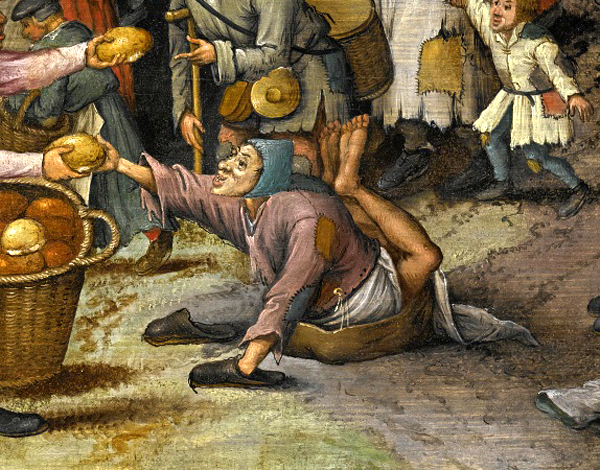
Art lijst
Schilderijen
- Bosch, Hieronymus – The Peddler
- Bosch, Hieronymus_The Haywain triptych
- Botticelli, Sandro_Primavera / Spring
- Brueghel the Elder, Pieter – The Tower of Babel
- Campin, Robert — Mérode Triptych
- Courbet, Gustave_The painters Studio
- Dali, Salvadore_Verzoeking van de heilige Antonius
- Dou, Gerard_de Kwakzalver
- Eyck van Barthélemy_Stilleven met boeken
- Fra Angelico_Annunciatie
- Géricault, Théodore_Vlot van Medusa
- Magritte, Rene_Verboden af te beelden
- Matsys, Quinten_De geldwisselaar en zijn vrouw
- Memling, Hans_Twee paarden in een landschap
- Onbekend-16e eeuw_4 gedaantes van een arts
- Picasso, Pablo_Guernica
- Rembrandt_Abraham en de drie engelen
- Rembrandt_Elsje Christiaens
- Velazquez, Diego_Las Meninas
Schilderijen en de dokter
- Agenesia Sacrale (a rare congenital disorder in which the fetal development of the lower spine)
- Alopecia areata (hair loss)
- Arthrogryposis congenita (birth defect, joints contracted)
- Artritis psoriatica (inflammatory disease of the joint)
- Artritis reumatoïde
- Breast development (delayed)
- Bubonic plague
- Difterie (kroep)
- Gigantisme & Acromegalie
- Hazenlip (cheiloschisis) / gespleten gehemelte
- Herpes zoster (gordelroos)
- Hongeroedeem
- Influenza Epidemic of 1858
- Keisnijding
- Krankzinnigheid - Malle Babbe (1640)
- Kropgezwel (struma)
- Lepra
- Liefdesziek, zwangerschap
- Lymfkliergezwel (lymfoom), non-Hodgekin
- Manische Depressie Psychose
- Mazelen? / Rubeola? (acute virale infectie)
- Melanoom of naevus (geboortevlek)
- Membraneuze glomerulonefritis
- Moord (pneumothorax, slagaderlijke bloeding)
- Neurofibromatose
- Oogoperatie
- Osteoartrose / hallux valgus
- Osteomyelitis
- Otitis media (acute middenoorontsteking)
- Parotitis (mumps)
- Platvoet en Spitsvoet
- Polio
- Prepatellaire bursitis
- Progeria
- Pseudohermafroditisme
- Pseudozwangerschap
- Psychoneurose (acute)
- Rachitische borst
- Reumatische koorts (acute)
- Rhinophyma of knobbelneus
- Rhinophyma rosacea_depressie
- Rhinoscleroma
- Schimmelziekte_Favus
- Syfilis (harde 'sjanker')
- Tandcariërs
- Tuberculose long
- Ziekte van Paget
Schilders
Historie lijst
- 1632-1723_Antonie van Leeuwenhoek
- 1749-1823_Edward Jenner
- 1818-1865_Ignaz Semmelweis
- 1822-1895_Louis Pasteur
Wetenswaardigheden lijst
- 1887 Psychiatric Hospital
- Animals on duty
- Bizarre advice for parents
- Bloodletting
- Bloodthirsty Hungarian Countess Elizabeth Báthory (1560–1614)
- Butler escaped punishment three times.
- Dance mania / Saint Vitus Dance
- Doctors’ advice did more harm than good
- French Revolution Louis XVI
- Frontal syndroom (Phineas Gage)
- Heart disease (Egyptian princess)
- IJstijd (kleine)_1300-1850
- Ivan IV de Verschrikkelijke (1530-1584)
- Kindermishandeling
- Koketteren met koningin Victoria
- Koningin door huidcrème vergiftigd
- Kraambedpsychose (Margery Kempe)
- Massacre in Beirut
- ME stonden bol van de seks
- Mummie bij de dokter
- Plee, Gemak of Kakstoel
- Prostaatkanker (mummie)
- Sexhandel in Londen
- Swaddling baby
- Syfilis was in de mode
- Testikels opofferen
- Tropische ziekten werden veroveraars fataal
- Vrouwen als beul in WOII
- Wie mooi wil zijn moet pijn lijden
- Zonnekoning woonde in een zwijnenstal

